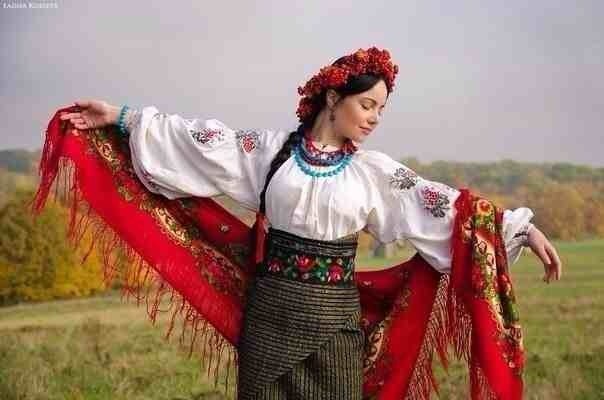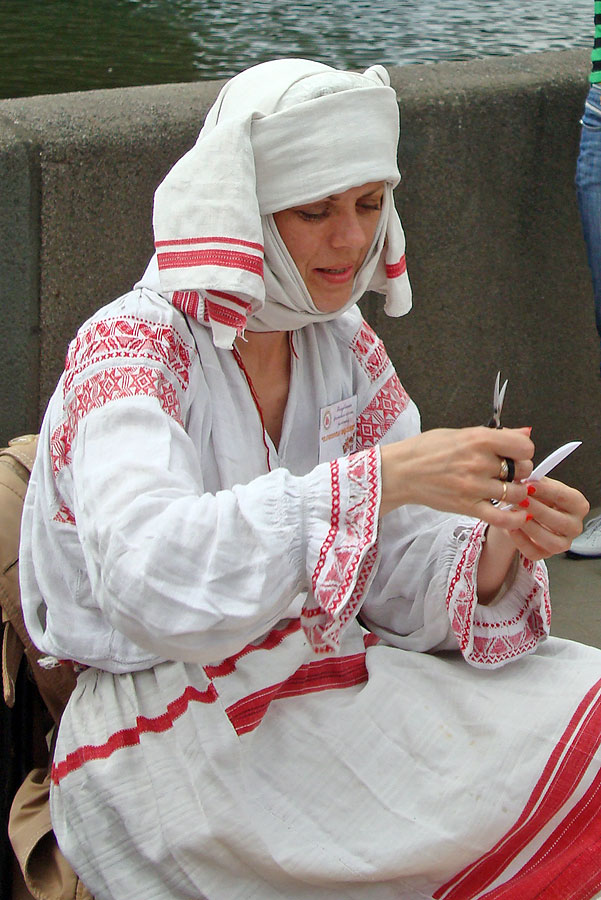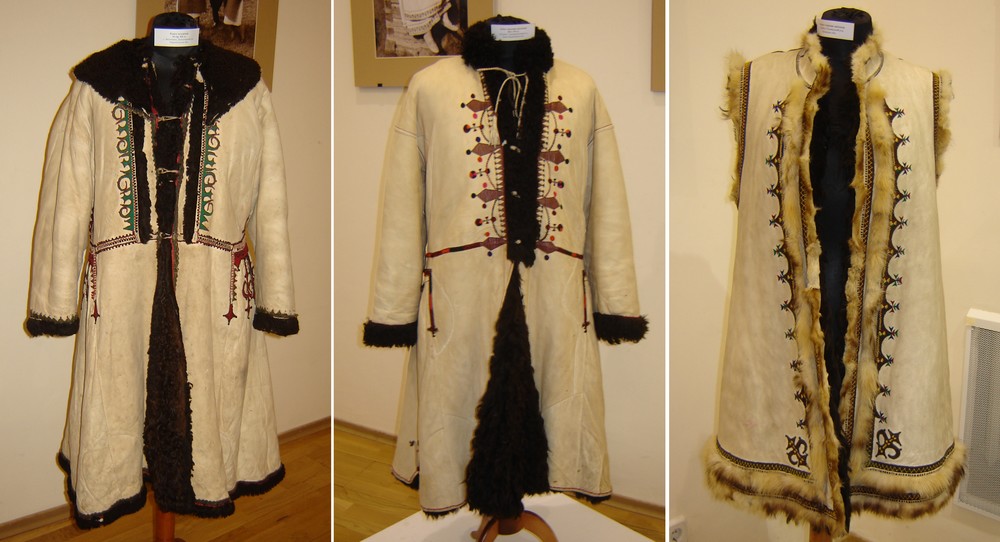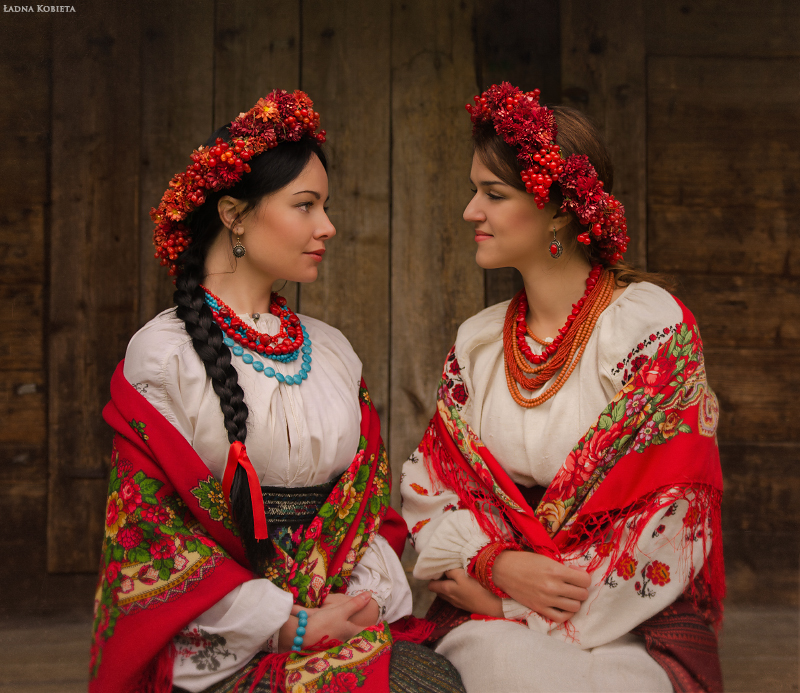Women's hairstyles
Hairstyle, hats and jewelry
played an important role in women life. The most common hairstyle was hair
braiding in 1 or 2 braids, which were intertwined with colored ribbons or
strips. On the Left Bank, on weekdays, girls braided hair in braids, and put
them on head in wreath-type. During holidays they leave braid. On the Right
bank, during holidays, girls braided hair in two braids. Also on the Right bank
of the girls separated front section of hair, and this was divided into two
curls on the sides of the forehead. In wreath-type hairstyles girls often
intertwined flowers.
Other hairstyles were
collecting hair knot behind, folded in two braids wreath, braided plaits over
the ears, and the girls of Lemkivshchyna - ethnic territory of Ukraine – don’t
use braids and wreaths.
During summer, girls walked
bareheaded, but on holidays they wore wreaths or decorated hair with stripes. Girls
used Chilce - wire with copper plates. They put it under the wreath since the
time of Kyivan Rus.
Married women twisted hair or
lay it around the head.

Girl with 1 braid

Girl with 1 braid and wreath

Girl with wreath

1 more girl
Women’s
headdresses
Popular women's headdress was
hustka. Depending on the region, hustkas had their own designs, colors, ways of
tying and making.
The oldest women's headdress
was Namitka - long white canvas. Each region had its name canvas and the way
assembly. Namitka often combined with other elements of women's headdress.
Common were Ochipky -
headdress with a cloth or silk, which covered the hair. It could be different
forms. For example in the Kyiv region ochipok was high, in the form of hat.

Girl with hustka
Hustka

Women with namitka

Different types of Ochipky
Jewelry
A common was a necklace. In
each region, it consisted of different parts: glass, amber, coins, beads. Neck
decorations were Zhardy - neck ornaments with copper crosses.
With copper, silver or gold
were produced bracelets, rings or jewelry in the ears.

Zhardy and necklace
Men's hairstyles, headdresses
and jewelry
A common man's hairstyle was
cutting hair to the one height; cutting the hair around the head, and leaving
behind. This hairstyle replaced the previously popular hairstyle "Oseledets".
In Polissya region beard was worn by young and old men, in the Carpathians –
only by older people. On the other ethnic territories our ancestors left only a
mustache.

Man with oseledets
Popular was type of
headdress - Kuchma - hemispherical cap made of sheep skin, Kapturky - wool
caps, Klepani - caps of loth with fox fur, straw Bryli, Kartuzy.
Men wore chains with crosses
and rings.

Man with mustache and kuchma

Old straw Bryl' master
And finally, if you ant to see more, please check this video. Cool video and beautiful Ukrainian song.



















